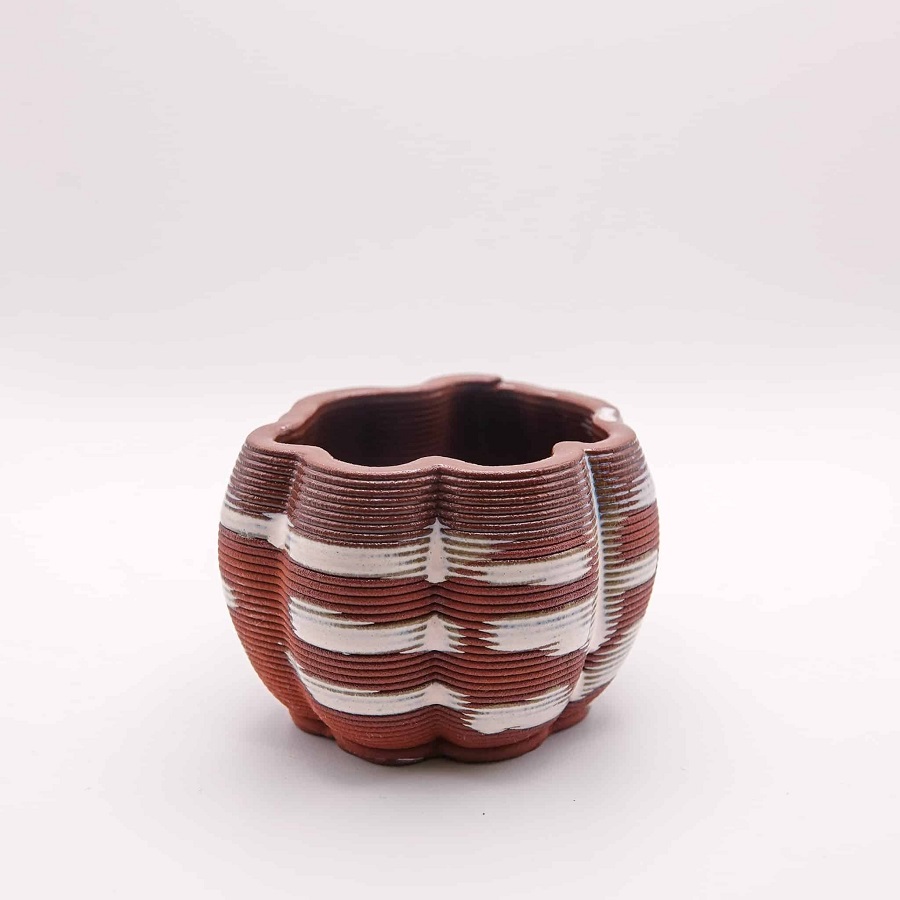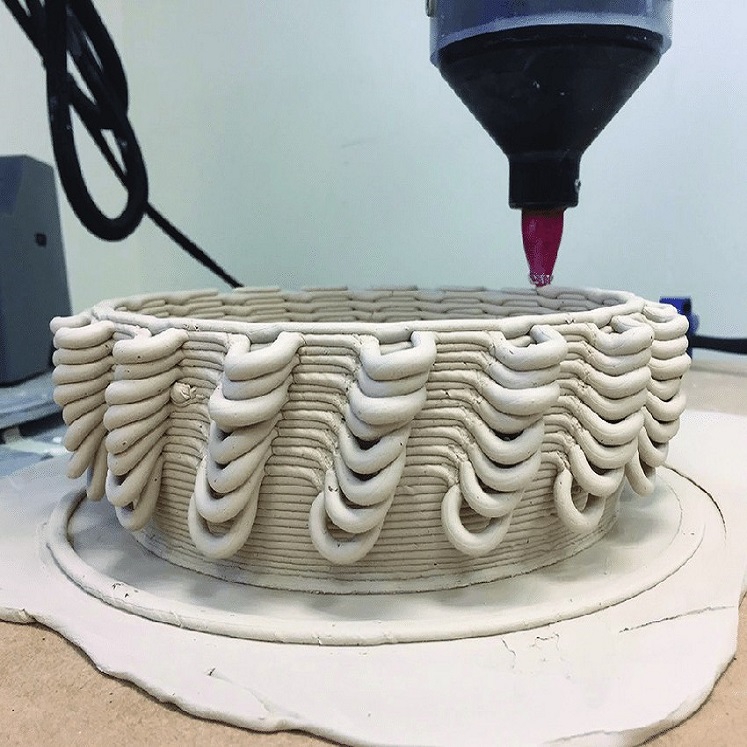Introduction to 3D Printed Ceramics
3D printed ceramics are transforming how we create objects. This innovative method involves layering materials. The process is additive, precisely stacking layers to form objects. Early crafting of ceramic items was manual and labor-intensive. 3D printing now brings speed, accuracy, and complexity without the manual labor. It uses digital designs to shape items. This technique supports intricate detailing that was once tough to achieve.
Artists and manufacturers are adopting 3D printed ceramics. They use them for art, functional ware, and complex industrial components. These printed objects can withstand high temperatures and corrosive materials. Moreover, the adaptability of 3D printers makes them perfect for custom projects.
The growth in 3D printed ceramics is due to its vast potential. From aerospace to medical implants, its applications are expanding. Along with wide use, 3D printers are now more accessible. They are more affordable, and the knowledge to use them is spreading.
In summary, 3D printed ceramics are shaping the future of manufacturing. They offer benefits in design flexibility, production speed, and new possibilities in ceramics. They signify a major step in the evolution of material technology and craftsmanship.

Evolution of Ceramic Printing Technology
The shift from traditional methods to 3D printed ceramics marks a significant evolution. Earlier, artisans shaped each piece by hand. This was time-consuming and limited in precision. But today, 3D printing technology has reshaped this process. Here is how the technology has progressed:
From Handcrafting to Digital Modeling
In the past, the creation of ceramics was an art of the hands and tools. Each vessel took weeks to complete. With 3D printing, we move from handcrafting to digital modeling. Now artists design complex shapes with ease on computers. This has unlocked new creative potential.
From Simple Shapes to Complex Geometries
3D printers handle shapes that were once impossible. Simple pots and plates have evolved into intricate designs. These designs are as durable as they are beautiful. This elevates ceramics from utility to high art.
From Kiln Firing to Advanced Sintering Techniques
Firing ceramics in kilns was the core of hardening them. Now, advanced sintering methods harden printed objects more uniformly. This improves the overall quality of the product.
From Small Batches to Mass Customization
Initially, ceramic production was best suited for small batch runs. Mass production meant a loss of detail. With 3D printing, creators now produce custom designs on a large scale. This mass customization does not compromise on detail or quality.
From Limited Materials to Diverse Feedstocks
Early 3D printers had material limitations. They could only use a few types of feedstock. Now, there’s a wide selection of materials suitable for ceramic 3D printing. These range from porcelain to high-performance ceramics with varying properties.
The evolution of ceramic printing technology reflects huge strides in efficiency and creativity. 3D printed ceramics have opened doors to innovative designs and applications. As the technology continues to advance, the potential for what can be created seems limitless.
Advantages of 3D Printing in Ceramics
3D printed ceramics have several clear benefits over traditional methods. Precision and detail stand out among these. With digital designs, exactness is far superior to manual effort. This precision allows for complex, intricate detailing that manual methods can’t match. It grants artists and scientists a new realm of creative possibilities.
Another advantage is speed. 3D printing technologies can produce ceramics in a fraction of the time taken by traditional methods. Due to this, it’s possible to iterate designs quickly, refining and perfecting them rapidly.
The strength and durability of 3D printed ceramics are noteworthy as well. Modern sintering techniques ensure uniformity and high-quality finishes. These robust ceramics can withstand extreme conditions, which is essential in industrial uses.
Customization is a significant benefit of 3D printing in ceramics. Each piece can be unique without affecting production efficiency or cost substantially. This contrasts sharply with old methods, where custom pieces were costly and time-consuming to produce.
Additionally, waste is greatly reduced in 3D printing. The additive process uses only the necessary material, cutting down on excess. This not only saves materials but also reduces the energy used in production. It’s a step toward more sustainable manufacturing practices.
Lastly, accessibility has improved with 3D printing. As the cost of printers lowers and knowledge spreads, more individuals and businesses can engage with 3D printed ceramics. This democratization of the production process is reshaping the industry.
In summary, 3D printing offers superior precision, speed, strength, customization, waste reduction, and accessibility. These advantages are why the field continues to grow and why more sectors are adopting this technology.

Cutting-edge Materials Used in 3D Ceramic Printing
In 3D ceramic printing, advanced materials are key. These materials define the final product’s properties and applications. Let’s explore some revolutionary materials in use today.
Porcelain
Porcelain is a classic choice now being adapted for 3D printing. Its smooth surface and translucent quality make it a favorite. 3D printing has taken this age-old material into modern use.
Alumina
Alumina, known for its hardness and resistance to wear, is ideal for industrial parts. 3D printed alumina withstands high temperatures and is chemically stable.
Zirconia
Zirconia stands out for its toughness. It’s also resistant to cracking. Because of this, it’s used in medical devices and luxury goods.
Silicon Carbide
Silicon carbide is tough and heat-resistant. It’s employed in high-performance settings such as aerospace. It also has uses in energy sector components.
Hydroxyapatite
Hydroxyapatite is biocompatible, making it perfect for medical applications. 3D printed implants using this material can bond well with human bone.
Tricalcium Phosphate
Similar to hydroxyapatite, tricalcium phosphate is used in bioprinting. It assists in bone regeneration and is used in dental and orthopedic implants.
These cutting-edge materials bring diversity to the realm of 3D printed ceramics. They expand the technology’s capabilities, catering to specific industry needs. This diversity in materials lets manufacturers overcome previous limitations in design and function. As a result, the reach of 3D printed ceramics is ever-growing. By using the right materials, creators can make products that were once unimaginable.
Key Players and Startups in the Ceramic 3D Printing Industry
The ceramic 3D printing industry is vibrant and growing. Key players and startups drive its growth. They innovate and push the envelope in 3D printed ceramics.
Leading companies excel in this space. They offer diverse printers and materials. Many focus on research and development. Some provide comprehensive printing services.
Startups are crucial too. They bring fresh ideas and technologies. They often target niche markets. Examples include dental, aerospace, and art.
Known names in the industry include 3D Systems and ExOne. These pioneers have vast portfolios. Their products range from printers to printable materials.
New entrants like Lithoz and Voxeljet are making waves. They specialize in ceramic printing technology. Their solutions cater to specific industry needs.
Academic contributions are significant as well. Universities invest in research on new materials. They also develop improved printing processes.
Collaborations shape the industry. They happen between companies, startups, and academia. These partnerships foster innovation and practical applications.
In summary, key players range from established companies to dynamic startups. They work together and separately. Their goal is to advance the field of 3D printed ceramics.
Applications of 3D Printed Ceramics in Various Industries
The utility of 3D printed ceramics spans across multiple sectors, offering innovative solutions and pushing the boundaries of what’s possible. Here’s a look at how various industries are harnessing the power of this technology:
Aerospace
In aerospace, 3D printed ceramics are proving invaluable. They are used for components that must endure extreme temperatures. The precision of 3D printing ensures parts fit perfectly, critical in spacecraft.
Medical Field
The medical arena benefits greatly from 3D printed ceramics. Custom implants and prosthetics, tailored to patients, are being made. These items match perfectly with human anatomy, improving recovery times.
Automotive Industry
Car manufacturers use 3D printed ceramics for complex parts. These can withstand high heat, which is prevalent in automotive environments. This leads to better performance and longevity of the vehicles.
Electronics
Electronics find 3D printed ceramics especially useful for insulating parts. These parts need to resist electricity, and ceramics are perfect for this. As electronics shrink in size, precision becomes even more crucial.
Art and Design
Artists and designers are adopting 3D printed ceramics for unique, intricate works. The flexibility of the medium allows for shapes and textures that were once impossible. This opens a new era of artistic expression.
Architecture
Architects use 3D printed ceramics for complex building components. They can experiment with forms that traditional construction can’t achieve. This advances architectural design into new, exciting territories.
Consumer Goods
In consumer goods, customization is king. 3D printed ceramics make bespoke kitchenware, jewelry, and decorative items accessible. Consumers can now have products that are personalized to their taste.
These applications show the versatility of 3D printed ceramics in improving products and processes. With ongoing research, the future promises even broader applications. The benefits of this innovative technology continue to impact industries far and wide.

Environmental Impact and Sustainability of Ceramic 3D Printing
3D printed ceramics offer environmental benefits. This is key in today’s eco-conscious world. The process is notable for its sustainability and low waste production.
Here are key points on its impact:
- Reduction in Material Waste: Traditional ceramics often waste materials. 3D printing uses just what’s needed, reducing waste. This also lowers the environmental footprint.
- Energy Efficiency: The additive process of 3D printing conserves energy. It contrasts with energy-heavy traditional methods. This makes it a more sustainable option.
- Recyclable Materials: Some 3D printing feedstocks are recyclable. This means less raw material need and waste. It adds to the sustainability profile.
- Fewer Emissions: 3D printing can lower emissions. Traditional ceramics production often releases harmful pollutants. 3D printing does this to a much lesser extent.
- Localized Production: This technology allows making items locally. It reduces the need for long transportation. This cuts down on transportation emissions.
In summary, 3D printed ceramics are paving the way for a more sustainable industry. They cut down on waste, conserve energy, and reduce emissions. With continued innovation, the environmental impact will likely keep improving. This ensures a greener future for ceramic manufacturing.
The Future of Ceramic 3D Printing: Trends and Predictions
The future of 3D printed ceramics looks vibrant with several key trends and predictions shaping the industry. Rapid technological advancements will continue to expand the boundaries of what can be achieved with ceramic 3D printing. Here are some forward-looking insights:
- Increased Material Innovation: Researchers will develop new ceramic materials with enhanced properties. This will widen the application scope even further.
- Improved Printing Precision: As printers become more advanced, we can expect even higher precision. This will allow for more complex and delicate designs.
- Greater Adoption in Construction: 3D printed ceramics will likely play a bigger role in building and construction, fostering unique architectural possibilities.
- Expanded Medical Use: The medical field could see a surge in bespoke prosthetics and implants, improving patient outcomes.
- More Sustainable Practices: Emphasis on sustainability will grow. Methods to recycle ceramic materials and reduce energy use will become standard.
- Customization at Home: Domestic 3D printers for ceramics could become commonplace, opening up creativity for individual users.
- Cost Reductions: As the technology matures, costs should decrease. This will enable wider adoption across industries.
These developments paint a promising picture for the future of 3D printed ceramics. The industry is set to revolutionize manufacturing and create solutions that are both innovative and sustainable. As such, those involved in 3D printing can look forward to exciting times ahead.